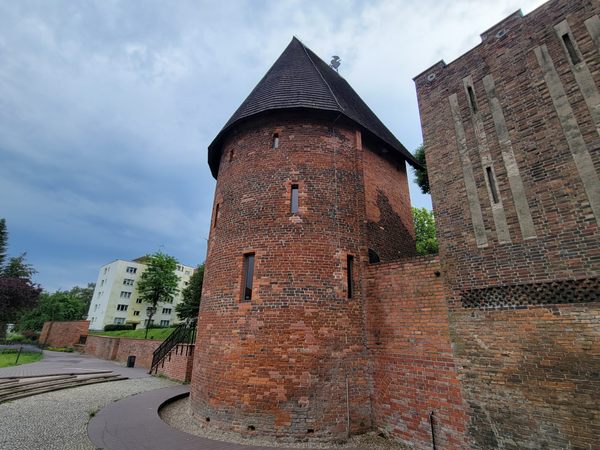In what is now a part of downtown in Słupsk, Poland, stands an odd-shaped local art gallery. However, the history of this structure has not always been so civil-minded. It owes its tall, narrow shape to it originally being built as a defense tower along the city’s walls in the 15th century.
As time moved on, the fear in the mind of the public became less focused on threats from the outside coming in and more on the people already around them. Throughout the 17th century, Europe at large accused thousands of people of being witches and subsequently burned them at the stake. The town of Słupsk, which was then known as Stolp, prosecuted many women for witchcraft. Many of these so-called witches were imprisoned in this exact tower.
Most famous is the case of “Trina the Papist,” originally born as Katharina of Brilon, Westphalia. According to local memory, Katharina met her first husband, Martin Nipkow, when he was a dashing young military man serving with the Dragoons. Upon the end of his time with the military, he moved himself and his wife, Katharina, to his hometown of Stolp. Unfortunately, this beautiful beginning would not have a fairy-tale ending.
The 17th century was a dark time, and with medicine being as primitive as it was, her warrior husband passed away. Now living in a town far away from her homeland and with no other family, she had to find a way to survive. She continued to practice her native Catholicism to cope with her loss in a town mostly converted to Lutheran. The isolation that she must have felt would have been overwhelming.
It might be true that being different makes one seem interesting. A butcher in town, Andreas Zimmerman, took a strong interest in Katharina and took her to be his wife. Soon Katharina became not only involved with the butcher but also involved with the business. In time Katharina proved to be such an excellent businesswoman that the neighboring shopkeepers felt that their livelihoods were under threat. Who was this Catholic to come into this Protestant town and muscle them out?
Instead of trying to compete with this shark of a lady butcher, they instead chose to accuse her of witchcraft, which was apparently far easier than lowering prices or providing better customer service. On July 27, 1701, Katharina Zimmerman was held in the witch’s tower, tortured, and then burned at the stake.
Local history remembers this tragedy with reverence. In modern-day Catholic Poland, locals remember her as “Trina the Papist (a derogatory term for Catholics).” She remains a symbol of Catholic pride and a story of one who stood accused. When the witches tower was rebuilt after World War II, it was capped with a weathervane in the shape of a witch, a nod to a primitive past. Most recently, in 2016, the local government renamed a street “Trina Papisten.”


